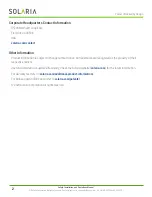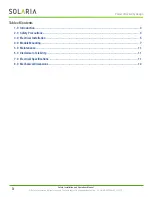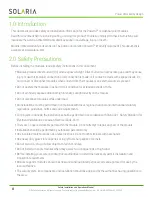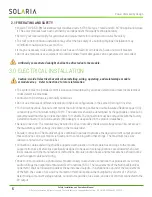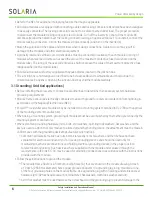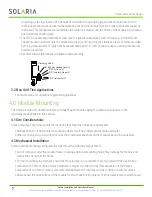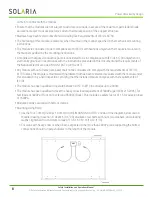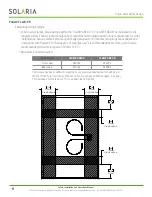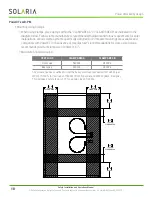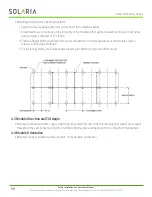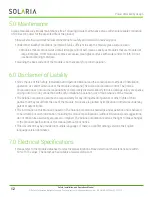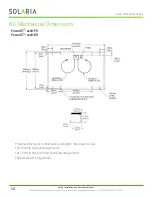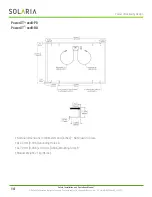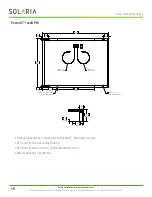
5
Safety, Installation, and Operations Manual
© Solaria Corporation All rights reserved. Contents subject to change without notice. SOL-MAN-0002 Rev 09,12-2020
Power Unlocked by Design
2.1 FIRE RATING AND SAFETY
y
PowerXT R-PD & R-PM residential solar modules are UL 61730 fire type 1 rated and IEC 61730 application class
II. The solar modules have been certified by an independent third-party testing laboratory.
y
Refer to your local authority for guidelines and requirements for building or structural fire safety.
y
The roof construction and installation may affect the fire safety of a building: improper installation may
contribute to hazards in the event of fire.
y
It may be necessary to use components such as earth fault circuit breakers, fuses and circuit breakers.
y
Do not use modules near equipment or locations where flammable gases can be generated or can collect.
Artificially concentrated sunlight shall not be directed onto the module.
3.0 ELECTRICAL INSTALLATION
Caution: Avoid all electrical hazards when installing, wiring, operating, and maintaining a module
or module array. Refer to Section 2 for more information
y
The system must be installed, commissioned and maintained by a licensed electrician unless local electrical
codes determine otherwise.
y
Contact with DC voltage is potentially hazardous.
y
Do not use modules of different electrical or physical configurations in the same DC string or inverter.
y
For field connections, Solaria recommends that all connecting cables be double insulated flexible copper (Cu)
conductors with a minimum rating of 90°C. The cable size should be determined by the applicable codes but is
recommended that this be no less than 4mm² or 12AWG. The connectors must be compatible with the factory
installed connectors on Solaria panels (MC4 design) or as specified in the product datasheet.
y
Series Connection: The modules may be wired in series to produce the desired voltage output. Do not exceed
the maximum system voltage indicated on the module label.
y
Parallel Connection: The modules may be combined in parallel to produce the desired current output provided
that each series string or module is fused prior to combining with other strings. The maximum fuse size
allowed is noted on the module label.
y
Connection cables and wiring shall be supported with plastic or rubber cable ties and clips to the module
support structures. Metal clips specifically designed to be used in solar applications are allowed when used
in accordance with the manufacturer’s instructions. Module junction boxes and metal cable ties should not be
used to support cables and wiring.
y
Under normal conditions, a photovoltaic module is likely to experience conditions that produce more current
and/or voltage than reported at Standard Test Conditions (STC). The requirements of the National Electrical
Code (NEC) shall be followed to address these increased outputs. In installations not under the requirements
of the NEC, the values of Isc and Voc marked on this module should be multiplied by a factor of 1.25 when
determining component voltage ratings, conductor capacities, fuse sizes, and size of controls connected to the
PV output.


